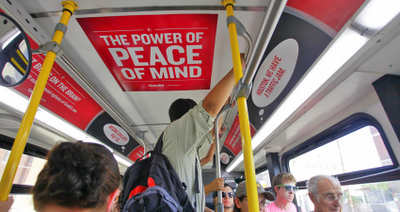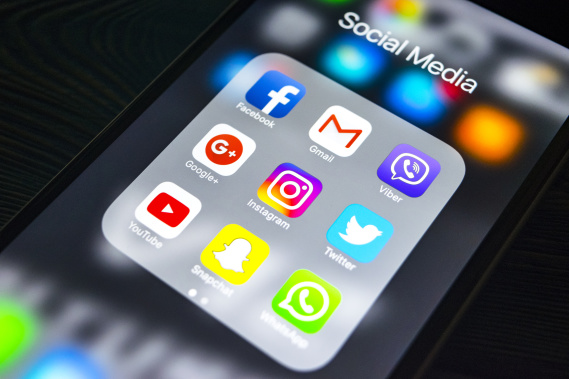
KFI-AM, a Los Angeles radio station, is very popular. It broadcasts at 640 AM. The signal is heard in most of west North America, including Arizona & Nevada. It broadcasts news and talks during the day. In the evening, it's a top forty music station. KFI supplies shows for national broadcasting, as well as local programs.
KFI was Los Angeles Dodgers’ flagship station during the 1960s. Throughout the 1970s, it aired the entire Dodgers game. During World War II, KFI became a primary source of war news in the Los Angeles area. KFI also carried the NBC network weekend radio service.
KFI began playing adult Top 40 music in mid-1970s. Popular disk jockeys were interspersed by aggressive local sports coverage. Dave Diamond was evening host. Bob Shannon survived the switch and went on to become a film acting coach for Los Angeles.
The Swingin' years was a nationally syndicated program that ran for over 25 years. Chuck Cecil hosted from 1956 through the 1970s. It aired previously on KFI, before it moved to KKJZ at Long Beach.

KFI was a talk and news station that shifted from a top-40 format in the late 1970s. Scott Ellsworth's program "Scott's Place", featured jazz music. Ted Rall was also a host, as well as Charlie Fox.
Lohman & Barkley was a morning duo. They also did live-call-in shows. Casey Bartholomew was a board operator and wrote many popular "updates." Tim Kelly contributed to the Bill Handel Program.
KFI also plays a leading role in the Emergency Alert System of the Western U.S. by providing play-by-play broadcasts for other stations in Southwest. Its transmitter site is in La Mirada, California. It has now turned off HD radio transmissions as of August 12, 2015.
KFI owns an iHeartRadio online streaming platform. One national syndicated talk program is available, as well as two local programs. All hosts are Southern Californians. The station has featured some of the most famous radio personalities.
KFI's lineup has changed a lot in the past decade. Many of the stations' old hosts have moved on. Some of the old hosts have returned. Neil Saavedra now serves as the marketing director. Mike Nolan has returned to the air as a ground traffic reporter.

In addition, KFI has added new programs. Mike Nolan, who was absent for a while, returned to KFI's 103.5 airwaves as a subject-matter expert for aviation topics. He also hosts Sunday's Jesus Christ Show.
Interviews with former NBC Radio personality were included on the KFI's 50th birthday day. Ev Kelly, Tim and Mark Thompson, the "Swingin’ years," were also present. Among the other guests were Tom Leykis, who hosted a political oriented "combat radio" program. Dave Hull, who hosted a weekly talk show, joined the lineup in 2013.
KFI's 50th Anniversary Celebration was held at Burbank, CA radio station. KFI was purchased by Cox Broadcasting for $15 million. This was one of the largest sums ever paid for a station on radio.
FAQ
How much does it cost to advertise on social media?
Social media advertising is expensive if you choose to take this route. You will be charged monthly for your time spent on each platform.
Facebook: $0.10 per 1,000 impressions
Twitter: $0.20 per 1,000 impressions (if your tweet is on Twitter)
Send out invitations on Linkedin for $0.30 per 1000 impressions
Instagram - $0.50/1000 impressions
Snapchat - $0.60 for 1,000 impressions ($0.40 Per User)
YouTube - $0.25 Per 1,000 Views
Tumblr - $0.15 per 1,000 impressions for text posts.
Pinterest - $0.05 per 1,000 impressions per month
Google + - $0.15-$0.20 per 1 million impressions
Tumblr- $0.15-$.20 for 100,000 impressions
Vimeo - $0.20- $0.25 per 10,000 impressions
Soundcloud - $0.20 - $0.0.25 for 1,000,000 plays
StumbleUpon - $0.20 -$0.25 per 1 billion pageviews
Digg – $0.20 - 0.25 per 1000 diggs
Reddit - $0.20 - $0.0.25 per 1000 Comments
Wordpress - $0.20--$0.25 per 500 comments
Flickr - $0.20 -- $0.25 per 5,000 photo uploads
Is there a way for me to get free traffic?
Free traffic refers to traffic which comes directly from organic search results. This traffic is known as natural or organic traffic. There are many methods to obtain free traffic such as article marketing or social media marketing.
Article Marketing is an excellent way to generate free traffic. Paid ads have a higher CPC, but the CPC is typically much lower than paid ads. Content marketing is also known by the term article marketing.
Social Media Marketing: Social media sites such as Facebook, Twitter, LinkedIn, and LinkedIn make it easy to promote your company through advertising. These platforms allow you to share updates, photos, and establish relationships with potential customers. Many businesses choose to pay for ad space on social media websites because they want to reach a wider audience at a lower price.
Blogging – Another way to generate traffic for free is to blog. High quality content will draw people to your blog. You can start to monetize your blog with the sale of products or services after you have attracted readers.
Email Marketing: Email marketing is a proven method to increase traffic to your website. You can grow your list and eventually sell to subscribers by sending them emails frequently.
How can I choose my target audience
Begin with you and your closest friends. If you don’t know where or how to start, ask yourself "Whom are I trying to reach?"
Ask yourself these questions: Who do you consider the most influential in your industry? What are their biggest challenges? Which are the smartest people working in my field? You can find them online.
Take a look back at how you started your company. What motivated you to start your business? How did you solve the problem?
These answers will help identify your ideal clients. This will allow you to learn more about your ideal customers and their motivations for buying from you.
Look at your competitors' sites and social media pages for clues as to who they cater.
Once you have identified your target customers you will need to choose the channel to reach them. An example: If you provide services to realty agents, you may create an informational website for home buyers.
You could create a blog if you offer software to small business owners.
If you sell clothing, you can create a Facebook fan page for teens. A Twitter account could be set up by restaurant owners to allow parents to search for places that are kid-friendly.
This is the point: There are many ways to communicate your message.
What is affiliate marketing?
Affiliate marketing allows you to make money by referring people to other websites that sell products or services. You get paid by the product owner when someone buys from them.
Referrals are the basis of affiliate marketing. You don't have to do anything special for people to buy from you. You just need to refer them to our website.
Making money doesn't require any hard selling. It's easy to sell just as much as it is to purchase.
In minutes, you can also set up an affiliate account.
Referring as many people as possible will increase your commission.
There are two types:
-
Affiliates who own their websites
-
Affiliates who work in companies that offer products or services.
What are the basics of internet advertising?
Internet advertising is a key part of any business strategy. It allows companies to reach potential customers at low costs. There are many forms of internet marketing. Some advertising is free and others are paid.
There are also several ways to advertise on the internet, including banner ads, pop-up ads, search engine optimization (SEO), pay-per-click (PPC) advertisements, social media marketing, e-mail marketing, and mobile marketing. Each method comes with its own set of advantages and disadvantages.
What do you need to know about print advertising?
Print advertising is a good medium to communicate effectively with consumers. Many companies use print advertising to promote their products. The key objective is to capture the attention of the consumer.
Print ads are typically one page long and include text, images, logos and other graphics. You may also find sound, animation, video and hyperlinks.
Here are the main types and classifications of print advertising:
1. Brochures: These large-format printed pieces are meant to draw customers into stores. They often have colorful pictures and eye-catching designs.
2. Catalogues are smaller versions than brochures. They are sent to customers who have requested specific information.
3. Flyers – These are tiny pieces of paper distributed at events like concerts or fairs. They are generally free but must be paid for if they are handed out at retail outlets.
4. Posters - These flyers can be larger than the ones you see on the flyer. These flyers can be displayed on buildings, fences and walls. They are usually created using computer software programs designed to catch passersby's attention.
5. Direct mail - These are letters or postcards that are sent directly to potential customers. These are sent to customers periodically by businesses to remind them about their business.
6. Newspaper Ads are placed in newspapers and magazines. These ads are often quite long and include both text and images.
What do you need to know about radio advertising?
Understanding how different media interact with each other is crucial. All media forms can be considered complementary, rather than competing.
Radio is best used as an extension of television advertising. It complements TV by reinforcing key messages and providing additional information.
Radio listeners often find TV commercials too lengthy. Radio ads are generally shorter and less expensive.
Statistics
- This means that at least 50% of an ad needs to be shown on the screen for at least one second. (quicksprout.com)
- Advertising's projected distribution for 2017 was 40.4% on TV, 33.3% on digital, 9% on newspapers, 6.9% on magazines, 5.8% outdoor, and 4.3% on radio. (en.wikipedia.org)
- Advertising spending as a share of GDP was about 2.9 percent. (en.wikipedia.org)
- It's 100% reliant on your website traffic. (quicksprout.com)
External Links
How To
How does one place an advertisement on a billboard?
Billboards have been around since the late 1800s, but they were first made popular during World War II when they became standard fixtures along roadsides and highways. Most billboards contain text advertising. However, some have photographs or art. Most billboards are static. However, others display messages that can change often, such as weather forecasts or stock prices.
While most billboards are outdoors displays, indoor versions are available. Outdoor billboards are usually seen by motorists passing by them several times per day. Indoor billboards may only be viewed once every few year. A cubic billboard, which is the most commonly seen type of outdoor billboard, is made up three layers. These include two sheets of glass sandwiched with a layer containing fiberglass mesh. This allows air flow through the billboard and keeps it cool in summer and warm in winter.
Billboard Advertising Inc. has many of North America's most prominent billboard advertising firms. Advertisers pay them to advertise on their billboards. Advertisers are then offered space on these billboards by these companies. These spaces can be purchased by advertisers based upon how much advertising they are willing to spend. They often choose the best locations for their ads based on where people drive and walk the most.
Billboard Advertising Inc. is licensed to sell ad space and to erect signs in cities. Some cities allow billboards to be placed anywhere, while others limit them to specific areas. Chicago for instance requires billboards not to exceed 1,000 feet from any highway. Other cities require that billboards be placed no closer than 500 feet from a school or church.
Billboard Advertising Inc. holds contracts to promote products or services in the United States. This includes Florida, California and Nevada, Texas and Arizona, New Mexico and Colorado.